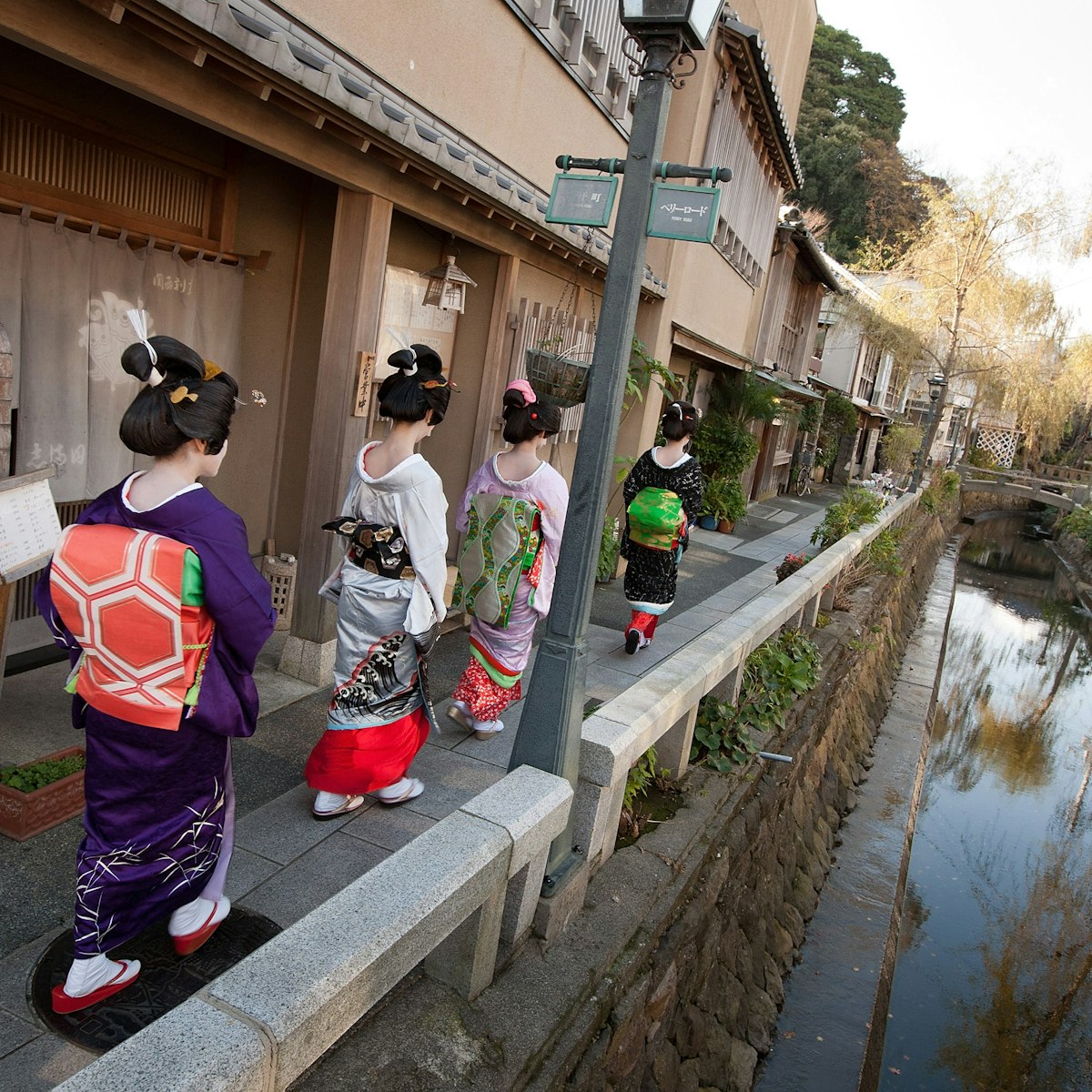
Izu Peninsula
It takes less than 10 minutes to walk end-to-end of this quaint cobbled street shadowing a narrow stream leading to Ryōsen-ji temple. However, the…

Izu Peninsula
It takes less than 10 minutes to walk end-to-end of this quaint cobbled street shadowing a narrow stream leading to Ryōsen-ji temple. However, the…

Izu Peninsula
A cliffside hiking trail winds over volcanic rock and through pine forest along the gorgeous Jōgasaki coast south of Itō. Most visitors head to Kadowaki…

Izu Peninsula
Resembling a parasol of cyprus and glass perched on a cliff above the ocean, this remarkable cafe space is the work of superstar architect Kengo Kuma …

Izu Peninsula
In the middle of the village is its namesake temple, said to have been founded over 1200 years ago by Kōbō Daishi, the priest credited with spreading…

Izu Peninsula
A 15-minute walk south of Shimoda Station is Ryōsen-ji, site of the treaty that opened Shimoda, signed by Commodore Perry and representatives of the…

Izu Peninsula
This grand inn (c 1928) is now a national monument for its fine woodwork. Each of its three storeys was designed by a different master carpenter;…

Izu Peninsula
A small but refined collection of Japanese and Chinese pottery, paintings and Buddhist treasures spanning a millenia awaits at this museum, built…

Izu Peninsula
This small museum displays artefacts and artwork relating to the reception of Commodore Matthew Perry and his gunboats, dubbed 'Black Ships' by locals…

Izu Peninsula
Ten kilometres south of Itō is this dormant rice-bowl volcano, a perfectly smooth, steep-sided grassy mound. Ride the chairlift to the 580m summit where…

Izu Peninsula
Half an hour by bus from Shuzen-ji Station is this 25m waterfall in a ravine. Wasabi plants thrive in the river here; the roadstop gift shop sells tasty …

Izu Peninsula
The plinth-mounted bust of Matthew C Perry commemorates the landing of the US commodore and his men at this spot in 1854, a short hop from Perry Road.

Izu Peninsula
Founded in 1590, this Zen temple is most famous as the first Western consulate in Japan, established in 1856. A small museum has artefacts of the life of…

Izu Peninsula
Explore the rooms and antique tools and curios in this old kimono shop and residence girdled in walls of namako-kabe (a lattice-like plaster pattern so…

Izu Peninsula
Kanazawa Shoko (www.k-shoko.org), who has Down syndrome, has been doing calligraphy since she was five years old. Her vividly expressive pieces, as well…

Izu Peninsula
This museum showcases the unusual plaster art 'paintings' of native son Chōhachi Irie (1815–99) including one of his masterpieces, Shungyo-no-zu (Dawn in…

Ikeda Museum of 20th Century Art
Izu Peninsula
Art lovers will not want to miss out on this treasure trove of big names, such as Dalí, Warhol, Renoir, Picasso, and Lichtenstein, all on show in an…

Izu Peninsula
A small museum in the grounds of Shuzen-ji containing ancient carved buddhas, other religious works of art and documentation of the restoration of these…

Izu Peninsula
If you keep walking east from Perry Rd, you can climb the steps into the hillside park of Shimoda Kōen, which overlooks the bay. It's loveliest in June,…

Izu Peninsula
At the southern end of Orange Beach, this little park is studded with photogenic bronze figurative sculptures by local artist Shigeoka Kenji.